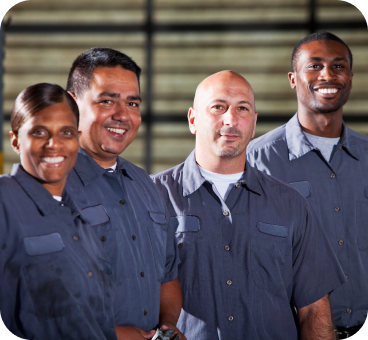Top 5 Training Gaps in the Restoration Industry—And How to Fix Them



Every restoration manager has experienced a late-night call about a water loss.
It’s 11:45 PM, and your phone buzzes: “Commercial water loss. Three floors. Team's already en route.”
“Team” is your newest technician, so you hope they remember the containment protocol you walked through last month. By morning, you're on-site yourself—rewriting a drying log, repositioning dehumidifiers, and explaining to the senior project manager why key documentation is missing.
You don’t need a post-mortem. You already know the diagnosis: gaps in training.
These gaps aren’t always obvious. They hide in job-site shadowing training plans, bulky processes, one-time training sessions, and critical knowledge trapped in a few people’s heads. But they add up to costly rework, expensive delays, missed revenue, and burned-out managers playing cleanup crew.
The cost isn’t just financial. It’s the constant drain on your best people who should be growing your restoration business instead of fixing the same avoidable problems. It's the frustration of watching promising technicians plateau because they can't access the knowledge they need. And it’s the nagging feeling that growth is possible, but locked behind broken systems.
These are the five most common training gaps holding back restoration teams, and here’s how industry leaders are closing them.
1. Why Shadowing Fails to Train Restoration Technicians Effectively

The most common training plan in the industry? “Follow Joe around.”
But Joe’s doing three jobs at once. He skips steps, forgets to explain things, or assumes the rookie is picking it all up. What gets passed on isn’t your process but Joe’s shortcuts.
This creates a dangerous game of telephone. The rookie who shadows Joe becomes the next trainer, spreading an even more diluted version of your standards. Before long, your "company process" exists only in theory.
Think about the last time you visited three jobs in a day. Did you see the same containment approach? Uniform documentation? The same customer handoff? If not, you're seeing shadowing's limitations in real time.
High-performing restoration companies replace this guesswork with a structured training roadmap: clear daily goals, hands-on milestones, and role-specific benchmarks. Day 1 might start with a restoration safety orientation. Day 3 might cover moisture mapping. And week 2 might dive into proper containment and documentation, with each step building on the last.
This way, new technicians don't just float beside a senior tech but advance through an intentionally designed learning curve. And instead of managers answering the same question for the fifth time, they're reviewing progress, not patching holes.
2. Why Inaccessible SOPs Hurt Restoration Jobsite Consistency

You have Standard Operating Procedures (SOPs). But if they’re in a binder or buried in Google Drive, they don’t exist in the field.
When techs are knee-deep fixing a water loss, they won’t stop to search a shared folder. They default to memory. Or worse: they guess. That's how five techs give you five different versions of what "proper water damage drying setup" looks like.
The problem compounds with complexity. Basic water extractions might stay consistent, but what about that tricky crawlspace mold remediation job? Or the rare Category 3 water loss with asbestos concerns? The less frequently a restoration procedure happens, the more critical accessible documentation becomes.
Operationally excellent restoration teams fix this by bringing SOPs to the job site. Think: step-by-step checklists, annotated photo guides, and short videos—all mobile-optimized and fast to search.
When the answer is five seconds away, it gets used. When it's not? It gets skipped.
But when it's used? Fewer mistakes, less tech handholding, and tighter execution without extra overhead for your restoration business.
3. Why One-Time Training Doesn’t Work for Restoration Teams

Most companies treat training like a box to check. One session, done.
But knowledge retention doesn’t work that way. Especially not when a technician is overwhelmed, new to the job, or under pressure.
Walking someone through mold protocols on a Tuesday won’t help them when they're in a dark, flooded basement with an anxious homeowner watching their every move.
That's why top restoration teams embed reinforcement training into daily rhythms: five-minute refreshers in morning huddles, one-question checks before sensitive jobs, and post-job debriefs after mistakes.
Reinforcement training closes the gap between knowing restoration procedures and implementing them correctly on job sites.
And when learning becomes muscle memory, knowledge retention goes up, and the technician's confidence follows.
4. How Reactive Training Slows Restoration Operations

A tech messes up a mold remediation protocol. So you rush out a training next week. Then, a drying chamber process gets botched. Another retraining session. The restoration training cycle never ends.
Reactive training feels productive because you're responding to real problems, but it creates a whiplash effect. Your restoration team never gets ahead of the curve because they're always catching up to yesterday's mistake.
There's also the signal it sends: restoration training becomes associated with failure rather than growth. Over time, team members begin to dread training sessions, seeing them as punishment rather than professional development.
High-performing restoration companies get off the hamster wheel by training proactively. They use past data to build seasonal calendars: frozen pipe protocol training in October, mold mitigation refreshers in April, and CAT audit prep in June.
Instead of reacting to restoration mistakes, they train (with built-for-purpose tools like KnowHow) to avoid them. Restoration technicians show up ready, not just present, and water damage emergencies feel rehearsed.
This results in fewer surprises, smoother performance, and a crew that always shows up confident.
5. Why Knowledge Bottlenecks Limit Restoration Growth

Every restoration team has one employee who knows how to fix the dehumidifier, scale over mountain TPAs, and handle the water damage client with one phone call.
They're your troubleshooter, your client whisperer, and walking encyclopedia of restoration wisdom. They're indispensable. And that's exactly the problem.
When that restoration expert is out sick or stretched thin, everything slows. Calls pile up. Jobs stall. The knowledge bottleneck creates operational vulnerability that worsens as you scale your restoration business.
Smart restoration companies reduce single points of failure by turning tribal knowledge into team knowledge. They film restoration procedure walkthroughs, narrate their expert's decision-making process, and document edge cases in a centralized system.
The restoration teams seeing the most success use restoration-specific tools (like KnowHow) specifically designed for this challenge. With KnowHow, they're capturing their experts' insights through simple video recordings, searchable guides, and step-by-step workflows. Over time, what used to live in someone's head becomes a playbook for new hires and a mirror for the wider team—accessible anytime, anywhere, and on any device.
By scaling your best people's wisdom, other employees can rise, and your rockstars can lead instead of babysitting. In turn, your ambitious growth plans aren't bottlenecked behind one brain.
Training Isn’t Just About Onboarding—It’s Your Competitive Advantage
If your training is ad hoc, undocumented, and reactive, it limits everything from customer experience to jobsite quality to how fast you can scale.
But with a repeatable, scalable system? Everything changes.
New hires ramp faster. Experts lead better. Customers get consistency. Managers stop firefighting. And perhaps, most importantly, you raise the ceiling on how many restoration professionals you can bring on without sacrificing quality.
The best restoration teams have figured this out. They use tools like KnowHow to standardize operations, provide role-specific guidance, and deliver training content straight to technicians’ phones—instantly accessible, whether they're standing in six inches of water or explaining next steps to a homeowner. That means every tech gets the same guidance. Every office runs the same playbook. And managers can stop putting out fires and start focusing on business growth.
Because in restoration, the difference between a strong end-of-year bottom line and missed revenue targets isn't just about who you hire. It's also how seamlessly they can apply your company's expertise when every second counts.
Ready to cut training time in half while improving on-the-job execution?
Schedule a 30-minute chat to see how ambitious restoration companies like yours are using KnowHow to train faster, retain knowledge better, and scale operations without sacrificing quality.
Looking for more insights on building effective restoration training systems? Check out our guides on The Top 8 SOPs for New Water Techs and Why Restoration Workers Want to Work for You.









